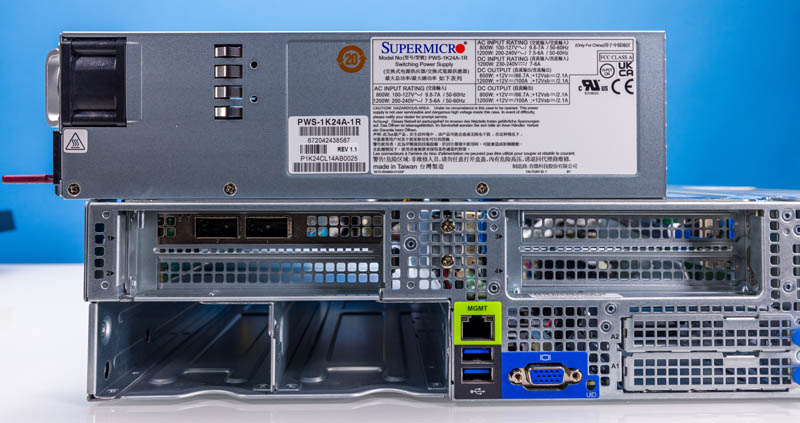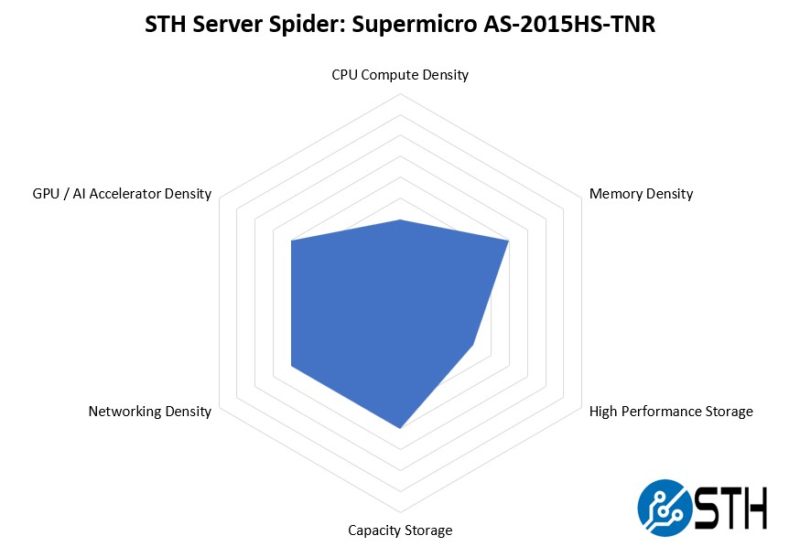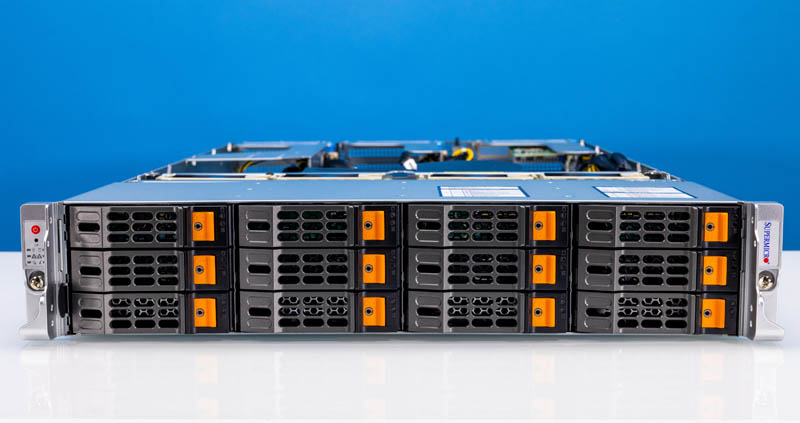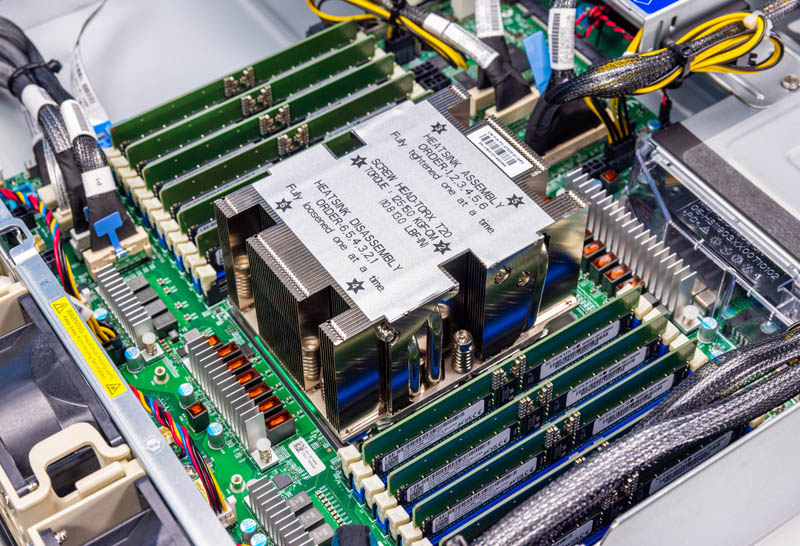Supermicro AS-2015HS-TNR Power Consumption
On the power side, we get two 1.2kW 80Plus Titanium power supplies.

One of the strangest things with this system was the power consumption. Idle power consumption was only 116W. While this may seem high to buyers of older generation systems, it is also low for 128 cores in those old systems. Under load, we could not get this configuration over 500W, a testament to the AMD EPYC Bergamo. Of course, add-in cards and such can make use of the 1.2kW PSUs, but those PSUs are leaving a lot of room for expansion card power.
It is strange to think that consolidating state-of-the-art dual-socket Xeon servers from 2020 could mean changing to a single CPU with one-third or lower power consumption, but here we are.
STH Server Spider: Supermicro AS-2015HS-TNR
In the second half of 2018, we introduced the STH Server Spider as a quick reference to where a server system’s aptitude lies. Our goal is to start giving a quick visual depiction of the types of parameters that a server is targeted at.

Supermicro’s Ultra line is designed to be an almost do-anything series. This server can handle fast storage and lots of PCIe expansion. On the other side, with 24 DIMM slots, it has more than many dual-socket servers today. Also, with 128 cores using AMD EPYC Bergamo, the compute density is much better than previous options.
Final Words
The Supermicro AS-2015HS-TNR can handle a number of different configurations. We used the new AMD EPYC Bergamo, but it can also utilize the EPYC Genoa and Genoa-X series of CPUs. All of the configurations get access to NVMe, 3.5″, or mixed storage, and plenty of rear PCIe expansion.

With AMD EPYC Bergamo though, especially with up to 24 DDR5 DIMM slots, we get the amazing capability to consolidate three-year-old systems on a greater than 4.5:1 ratio on sockets, and that assumes those older systems are using top-bin Intel Xeon SKUs like the Xeon Platinum 8280. During those times, 24 and 16 core Xeons were more common increasing the consolidation opportunities without losing performance per core.

If you still assume that you need two-socket servers, this is the type of server that should make you pause. 128 cores/ 256 threads in a single server and being able to architect with the simplicity that a single socket has to offer is a game changer. This is an awesome server and one that we can recommend given its great features and performance.



